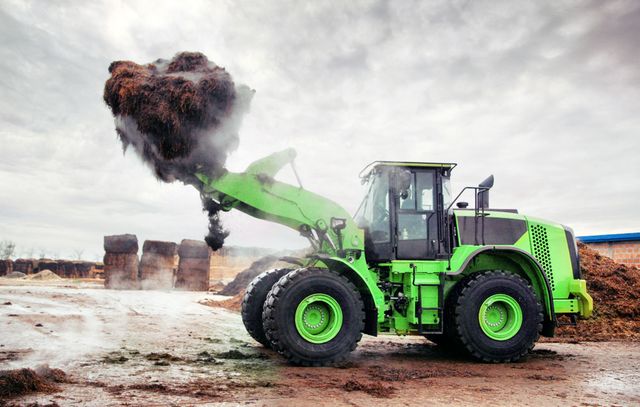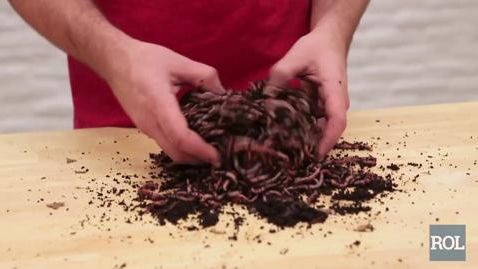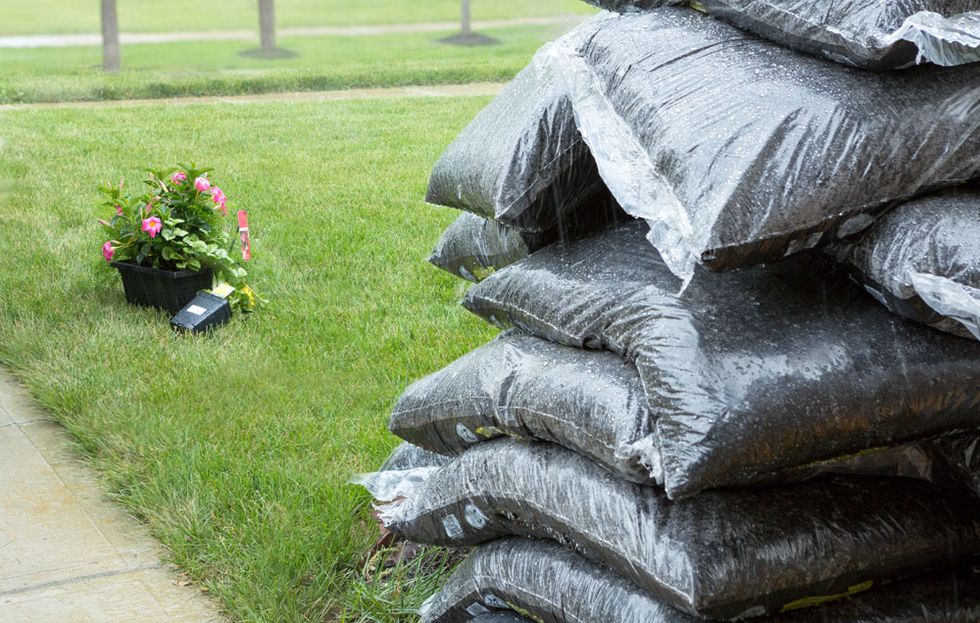This story originally appeared on Rodale’s Organic Life in July 2017.
If you're learning about organic vegetable gardening, chances are you're also learning a lot about compost, the thing that "happens" as leaves, pulled weeds, and grass clippings, or animal manure, break down into a rich, dark, crumbly, earth-smelling material. High-quality compost is teeming with life, full of beneficial microorganisms that will help improve your soil life and your plants' vitality. It can also help protect against plant disease. And for new gardeners who may not have a simple home-composting system in their yard yet, picking up bagged compost at the municipal or landscaping center, or at a big home-improvement store, may seem simple enough.
The problem is, not all compost is created equally, and some manufacturers even use human sewage sludge (which means, yes, human waste, though the industry terms it biosolids). This sludge can be laced with virtually anything that homeowners, hospitals, or industrial plants put down their sinks—endocrine-disrupting pharmaceuticals and shampoo chemicals, industrial solvents, and heavy metals. And who wants to grow vegetables in that?
The good news is the use of human sewage sludge is strictly banned in organic agriculture (another reason to eat USDA-certified food). However, many nonorganic farmers do use it to grow food crops, and it's also allowed to be used in municipal composting or store-sold bagged compost, and is sometimes labeled as "organic" or "natural" material. (Use of the term "organic" is strictly enforced in the food industry, but less so in other industries.) The Environmental Protection Agency declares human sludge safe for use as long as it passes testing for nine substances and two indicator bacteria. Which hardly covers all possible contaminants, considering that there are more than 80,000 chemicals in use right now in the U.S. "I have more than nine things under my sink that I wouldn't pour on my food source," says Darree Sicher, founder of the United Sludge Free Alliance. "There's no study on what happens when all of these things are combined."
Beyond the biosolids problem, the former Organic Gardening magazine tested 30 bags brands of compost and found other major issues, from manure that wasn't finished decomposing and reeked of ammonia to wildly varying application rate instructions to a product that contained bark mulch (something you use in your flower beds, but not your veggie garden) instead of advertised compost. Location also matters because even big-branded companies source compost ingredients locally, and they vary.
Most high-quality compost will contain mostly leaf mold, yard waste, and animal manure, explains April Johnson, horticulturalist at the Rodale Institute, an organic research farm located in Pennsylvania. She urges customers to actually feel the bag, or peek through a small tear in the bag, to check things out. "It should feel nice and earthy, like soil but a little lighter," she explains. "Stay away from ones that feel heavy like bags of sand. A lot of big-box stores, their compost feels like concrete in a bag. I question what's making it feel that way."
Here's what you need to know about buying compost:
Grill the seller
Avoid buying any bag of compost (or from a pile of compost) where biosolids are labeled as an ingredient. Also avoid buying a product that lists "inert ingredients" because you have no idea what they may be, Johnson advises. If that information isn't on the bag, whip out your cell and call the manufacturer's number given on the bag. Ask if they use "biosolids" in the product, and if they do, make sure to tell them you're not going to buy it because of that fact. "That market pressure will help these companies reevaluate what they're doing," says Sicher.
Know what else is in it
If your compost clears the biosolids test, you still want to press further to know what it's made of. "A compost made of nothing but bark and sawdust doesn't provide much nutrition for soil organisms or—eventually—for plants," explains Ed Smith, author of The Vegetable Gardener's Bible (10th Anniversary Edition. "The more diverse the material in it, the more diverse the bacterial and fungal populations in compost."
If you are purchasing a load of compost from a local composting center, ask the employees what goes into the compost, and what the pile is treated with, if anything. Most compost centers will have a separate area provided for the community to drop their yard waste, which is generally the start of the available compost. Often, the employees will be happy to show you their starter piles, and the more decomposed piles.
Test it
Smith adds that some potent herbicides, like Clopyralid (used on lawn and grain crops) don't break down even during the composting process, and can destroy virtually everything in your garden if introduced. There's a cheap and easy test to determine if your compost harbors harmful herbicides (or at the very least, a bad PH). Try starting a few lettuce seeds in the compost. If germination is poor or nonexistent, herbicides could be present or the pH of the soil could be way off. In either case, you don't want to use this type of compost.
Follow the pros' advice
Choose compost that has a loose texture, is dark brown or black, and has an earthy or musty smell (no ammonia or sewer odor). Of course, you could also learn to these 5 ways to compost without a backyard. Learn some compost lingo, and you'll be talking like a composting-turning-pro in no time.

Leah Zerbe is an online editor for Rodale News, where she covers the food system and environmental health issues. Prior to working at Rodale, she worked for NBCPhiladelphia.com and the Philadelphia Daily News. She and her husband run Potter's Farm, a sustainable farm in Pennsylvania.














